What the wine is?
Page 1 2 3 4
We are not wine producers, we are not ever been and never will be. We want freedom to drink and freedom of choice as almost 200 years we do in searching for better products of this land that we love so much. What is the wine and how it works? First we need grapes. Strange isn't it? Well. Meanwhile followed well the speech and the concept, you will see that everything is not so obvious! Since the Etruscan era, most wine product was white. Why?
The reasons begin by geographical conditions of Chianti.
- The latidudine: the distance the region from the equator. A plant vine needs 1400 hours of direct light to tack the bunch from green to red. There are approximately 117 days, each of which considered 12 hours of light full. Every cloud that the dark reduces radiation by 30%. For this we need around from March to August (around the 20th day), before it is
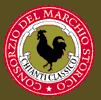 complete. Then, the plant will complete the enrichment and the aging of the bunch. complete. Then, the plant will complete the enrichment and the aging of the bunch.
- The exposure of land. The best lands for the grape-plant are in order of sun exposure: south, west, east and north. The last two, almosti discarded for wine production. and typically used for the olive-tree where they are protected from the warm south winds
- Soil structure: in chianti, there were almost exclusively clay soils. The clay causes stagnation of water in rainy periods and cracks in the ground during dry days.
- Age of the plant: the grape-plant has a biological cycle longer than human. The plant is still young till 25 years old, then it starts to grow up. To use a simple "comparison stone", in the first 10 years of aging sexual, "sapiens" do a lot of quantity and little quality. The same thing makes the wine until 25 years. Then grape starts to reduce production with fewer bunches but they are richer in body and flavour. Since 35 years, a grape plant, really starts to produce quality.
- Local climatic conditions. Mediterranean Climate: cold winters, hot summers. Violent showers during the autumns.
The adopted agricultural solutions were simple. The practices and the reasons even more reasonable.
- The red grape mature in depth because of latitude and the solar irradiation. Juice becomes a thick wine, with intense flavour but heavy in mouth. If associated to food, it becomes even more heavy.
- Only in south and west fields were used for wine production.
- The plants had sewage system. A good deep drain, avoided stagnant waterin the soil and at the same time, it could be fresh and cool during summer. The plantation was often deeper compared to the actual. The farming system named " giropoggio" (circles around the hill), or in large discendent steps, saved the soil to be washed out by the intense rains. At the same time, the soil could become rich of rainy water so important for the grape grow .
- No quality wines produced in young vineyards. The age of a vineyard was and still is, the first reason of quality production for a farmer.
- Farmers used native plants: they developed a natural defence system. A thicker skin and more spaced berries. They could better resist to berry breaking after the violent summer and autumn rains. There was no stagnant water in the bunch: the moulds didn't find the right conditions to grow.
- The grape plant were kept taller: they could get more sun and they could become faster dry.
| Common mushroom infestation |
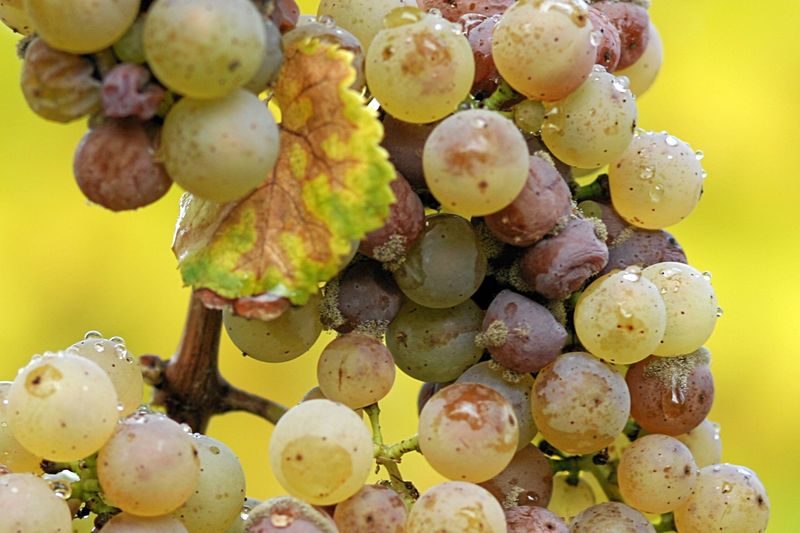 |
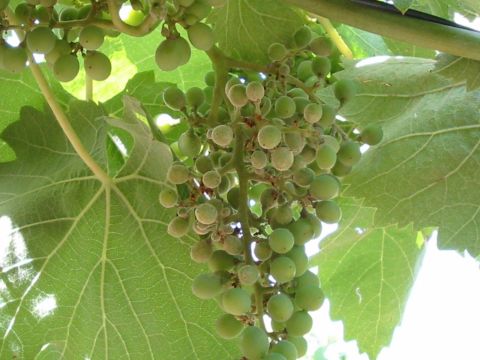 |
| Botrytis Cynerea over Riesling |
Oidio over a grape |
These are the reasons why till the first half of the 18th century, the biggest part of wines produced in Chianti were white. In addition, I have to say that a good wine as good food has to invite you to eat more, the wine has to invite you to drink another sip. It must have a balanced flavour. It shouldn't be aggressive or persistent. If you want the taste of wine you must have wine in your mouth. In a few words, our real chianti classico, gives you an explosion of taste. Taste of grape, brio, vitality (presence of white grapes), and must invite you to drink!.
Then at the bottom of making wine it's a simple thing..
Grape>>>
|
Juice>>>
|
Fermentation>>>
|
Filtration>>>
|
Maturation>>>
|
Wine
|
In wine, for obvious reasons, we must find the flavour of its grape! if not, you can surely doubt the wine is a natural wine. If there are flavours or odors thay are not its source-grape, it is surely artificially flavoured. Making a practical example. The Verduzzo from Firiuli: it produces a wine that has a sweet taste with a hint of flavour that recalls walnuts. If this wine there is not that specific taste, the wine is almost certainly adulterated. In Chianti classico basic grapes, there are not flavours of flowers, strawberries, blackberries, roses. the wine has to be "frutty" anyway. Grape-fruit is a fruit. No discussion about. Grape fruit->wine. Easy. Simple. Natural. Some producers make a rose plantation at the start of a grape-row of roses or some other "aromathic" plants. This way do not work. That's a simple stupid way to capture the fantasy. A plant every 100 it's has no influence. The way it could give a ipotetical taste it's just because the promisquity of therir roots. There is no relaction between those plants. No way. A real and natural way to give additional taste it's just using casks made with mixed wood. Anyway to "cover" the original taste of good food it's not so much "clever". This method it's a very common way to "cover" bad natural flavours like for old meat, old fish, bad wines! Well, adding flavours it's not honest anyway!
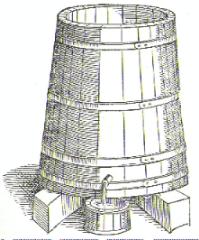 |
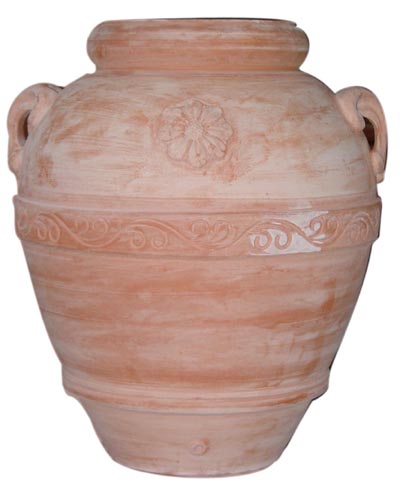 |
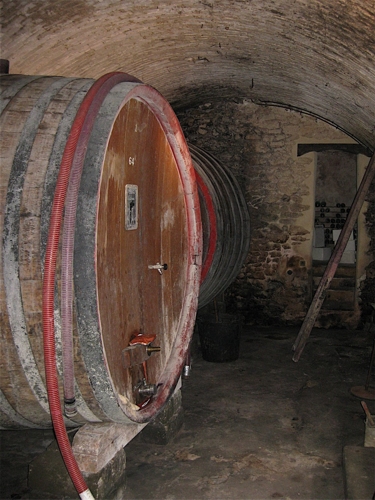 |
the wood vat (oak) |
Tuscan terracotta orcio |
A old oak cask |
Indeed, when we really produced natural wines, the first problem was just that. By the time, was difficult to save the grape taste by the influence of the wood. First, the vat: built in wood, was used for crushing and fermentation. The vats, like all the other wood containers, gave its tannins to the wine covering grape taste. Typically a wood cask was considered optimal only after 80 years of use. The wood was not longer able to change the wine. There were no glass containers big enough. There was no stainless steel. Some people tried to use alternative containers. A way was to use a terracotta orcio (1). It worked fine but there were some difficult problems to resolve. A limited capacity, a very high price for a single orcio and it's fragility during the wine making process.
Well, here we are.
Between 1834 and 1837 a gentleman, Baron Bettino Ricasoli, especially fond of agriculture and wine, in an attempt to obtain a drinkable harmonious wine, finally wrote the recipe of Chianti Classico.
| Tab. 2 |
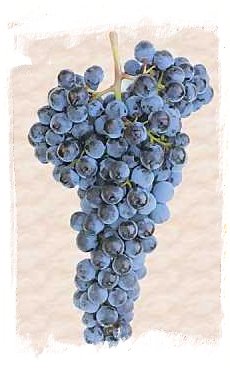 |
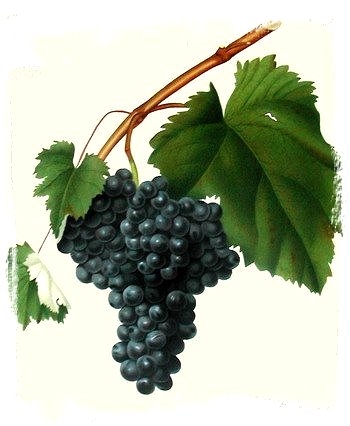 |
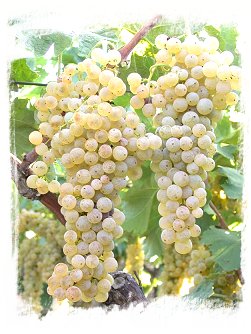 |
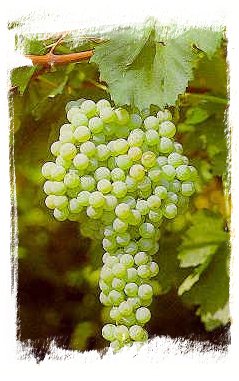 |
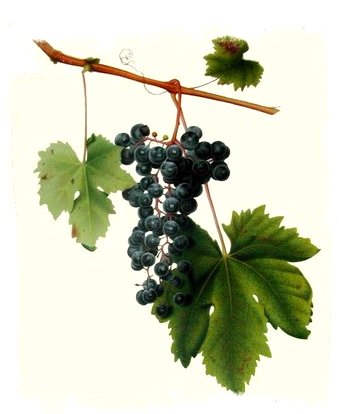 |
"Sangiovese,
which gives body and colour» (till 7/10)
|
Canaiolo
nero, which gives «parfume and softness» (till 2 /10)
|
Trebbiano.... |
...and Malvasia «which give acidity and ligtht smoothness» (till 2 /10)" |
With the adding of "colorino" if the wine is too much rosée
|
and here it is: a wine which keep a ancient and important agronomic and enologic "recipe". Something unique in the world. |
In simple terms, chianti classico is a wise authentic recipe. To take a simple example: it’s like to go to a concert and listen to a single musician playing guitar. If he plays bad it’s easy to find out. Another “thing” going to the same concert listening to a group or a orchestra instead!
Instruments must be well granted. The tone of each instrument must be harmonized with each other to give coherence song they are playing. In other words we need a good hearing and we must pay attention to find out what’s going on. In our “tasting case”, we all must pay attention about what we drink and trust our senses. To proceed in a wine tasting is not enough known provenance of the wine and the label. It should be totally opposite. You should find out where the wine comes from, how it is made, how much work it got in the cellar, how much natural it is, what the sensation it give to you. Otherwise the wine it’s just anonymous, it’s not “alive”, it’s just a drink.
A natural wine, is different year by year, it changes, it gives to you the taste and the power of nature and there should be a limit of what you can do to make it better artificially. I do not mean that we cannot do nothing. I just mean, do not make too much in another extreme way. Adding sugar before the fermentation is not allowed by the italian legislation and it's a terrible mistake.
If you can, before go to a farm to taste and buy, go in the fields, look at the plots exposition, the soil. Taste the grape-fruit before drink the wine. Ok, this will not give you direct information. The grape you taste will be wine a year later but you will find out what kind of grapes and the “quality” of them they used to offer you the wine you are going to taste.
Never, never, never, the taste of the original grape fruit have to disappeared!
Page 1 2 3 4
|





